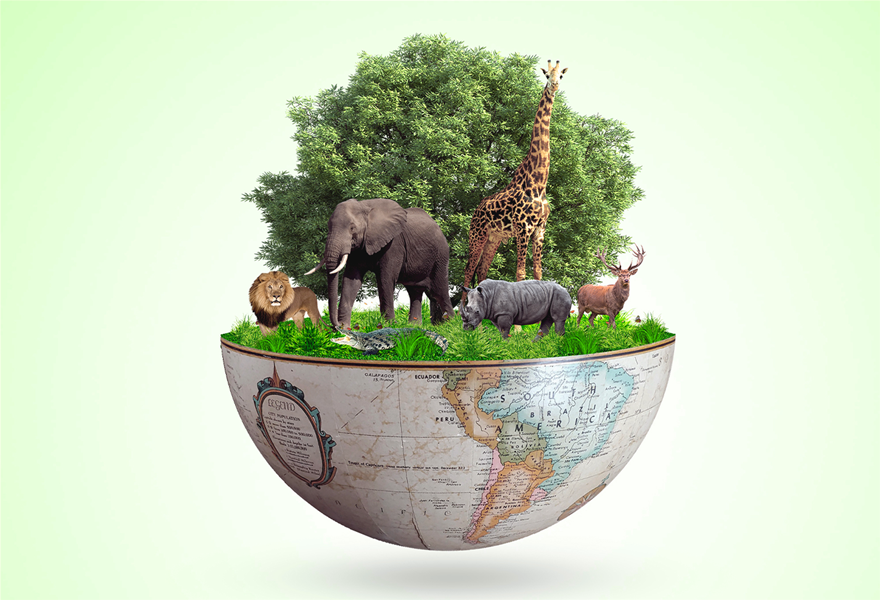A Story to Begin
In 1914, the world lost Martha, the last passenger pigeon. Once numbering in the billions across North America, the species was hunted into extinction within a few decades. Crowds came to see Martha in her final years in a Cincinnati zoo, a living reminder of how human carelessness can erase an entire species from the planet.
A century later, the story repeats itself with alarming speed. From tigers in Asia to amphibians in Central America, extinction is no longer the exception but the norm. Scientists warn we are living through the sixth mass extinction. Yet, alongside despair, there is also hope: communities, nations, and international organizations are mobilizing to halt biodiversity loss.
This article explores how humanity is responding to this crisis, examining global strategies for conservation in the 21st century.
The Crisis We Face
The Scope of Extinction
- One million species are currently at risk, according to the IPBES (Intergovernmental Science-Policy Platform on Biodiversity and Ecosystem Services).
- The rate of extinction today is estimated to be 100 to 1,000 times faster than the natural background rate.
Why It Matters
When species vanish, ecosystems unravel. Pollinators disappear, crops fail. Forests are cut down, carbon storage declines, and climate change accelerates. Extinction is not just about animals—it is about the survival of humanity.
Global Strategies: What the World Is Doing
1. International Agreements
- Convention on Biological Diversity (CBD): Signed by 196 countries, it sets global biodiversity targets.
- Paris Agreement (Climate Link): While focused on emissions, it indirectly supports biodiversity by tackling climate change.
- CITES (Convention on International Trade in Endangered Species): Regulates trade in endangered species.
These agreements provide a framework, but enforcement often lags behind ambition.
2. Protected Areas and Nature Reserves
- Today, around 17% of land and 8% of oceans are protected.
- The new “30×30” goal aims to protect 30% of Earth’s land and seas by 2030.
- Success stories include Costa Rica, where reforestation policies restored nearly half of its forests, boosting both biodiversity and ecotourism.
3. Community-Led Conservation
- Indigenous peoples manage lands that harbor 80% of global biodiversity.
- In Namibia, community conservancies allow locals to benefit from wildlife tourism, reducing poaching and increasing animal populations.
- Empowering local stewards is often more effective than top-down enforcement.
4. Technology for Conservation
- Drones monitor deforestation.
- AI algorithms identify species in camera trap photos.
- Genomics helps track genetic diversity and even explore possibilities of “de-extinction.”
- Technology enables global collaboration, making conservation smarter and faster.
5. Market-Based Approaches
- Payments for ecosystem services: Farmers are compensated for protecting forests.
- Carbon markets: Forest conservation is monetized as a climate mitigation strategy.
- Sustainable certifications: Labels like “Fair Trade” or “Rainforest Alliance” incentivize biodiversity-friendly consumption.
The Challenges Ahead

- Political Will – Governments often prioritize economic growth over conservation. Short-term profit trumps long-term survival.
- Funding Gaps – Conservation requires billions annually; current funding is insufficient.
- Conflicting Interests – Mining, agriculture, and infrastructure projects threaten protected areas.
- Global Inequality – Developing countries hold much of the world’s biodiversity but lack resources to protect it.
- Climate Change – Accelerates species loss, overwhelming traditional conservation methods.
Stories of Hope
- The Return of the Bald Eagle (USA): Once near extinction, conservation laws and bans on DDT pesticides revived populations.
- Whale Recovery: Global whaling bans allowed humpback and blue whales to slowly rebound.
- Giant Panda (China): Once the poster child of extinction risk, now downgraded from “endangered” to “vulnerable” thanks to targeted protection.
These victories show that extinction is not inevitable—conservation works when given priority.
Toward a New Vision of Conservation
Beyond Protected Areas
Conservation cannot be confined to isolated parks. Biodiversity must be integrated into cities, farms, and economies. “Living with nature” is the new paradigm.
Linking Climate and Biodiversity
Protecting forests, wetlands, and oceans is also climate action. The two crises—climate change and biodiversity loss—must be solved together.
Education and Cultural Shifts
Young generations are growing up more aware of ecological fragility. Global movements like Fridays for Future bring biodiversity into the public consciousness.
Looking Ahead: What Can Be Done
- Governments: Enforce strong environmental laws and meet international biodiversity targets.
- Businesses: Adopt sustainable practices and recognize biodiversity as natural capital.
- Citizens: Support eco-friendly consumption, reduce waste, and advocate for stronger policies.
- Scientists: Innovate new methods of monitoring, restoration, and genetic preservation.
Conservation is not a niche project—it is a survival strategy for civilization.
Conclusion: A Choice for the Century
The extinction crisis reminds us of Martha, the last passenger pigeon, and of countless species on the edge today. Yet the 21st century also offers unprecedented tools: global cooperation, advanced science, and a growing awareness of humanity’s dependence on nature.
The choice is stark: continue down the path of destruction, or embrace conservation as a defining project of our age. If biodiversity is the web of life, then preserving it is not about saving animals or plants alone—it is about saving ourselves.
















































